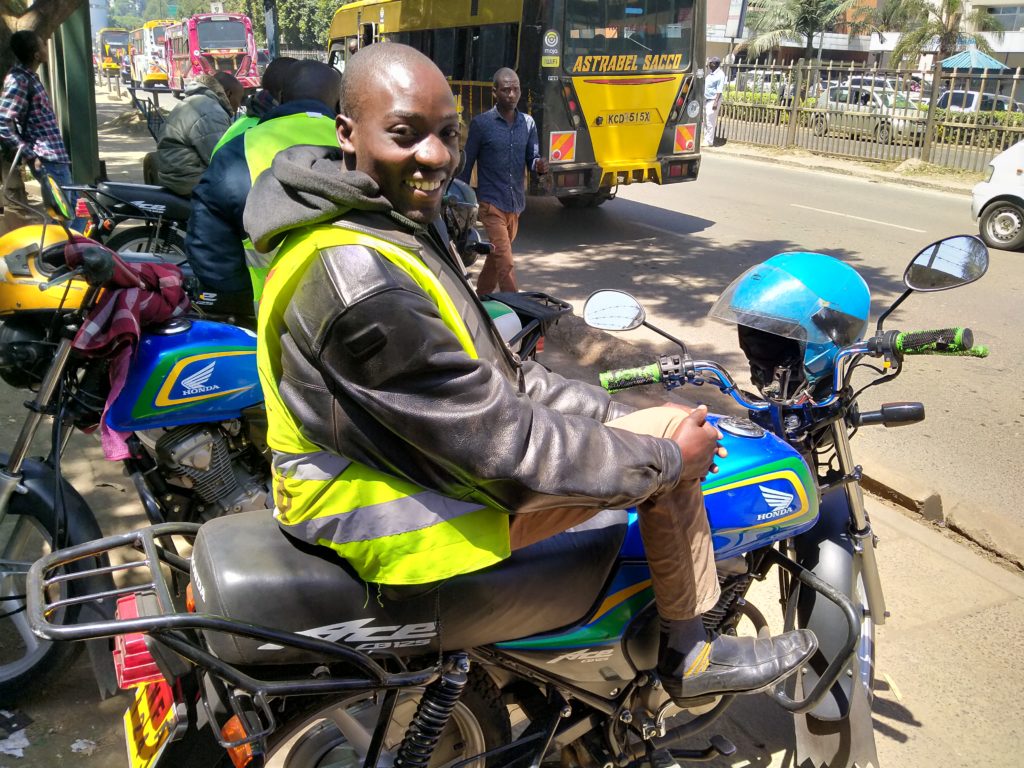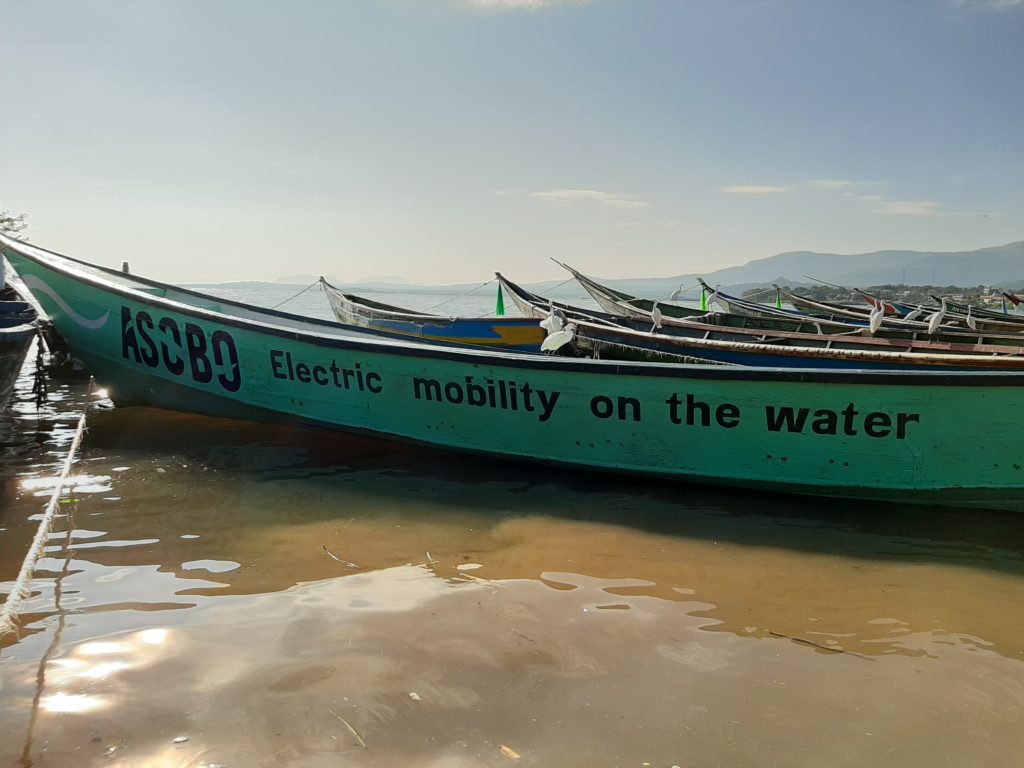Africa is home to the fastest-growing population globally, with numbers expected to rise by nearly 50% over the next 14 years, growing from 1.2 billion people today to over 1.8 billion in 2035.
As the population increase outpaces economic growth, much of Africa’s youth, who account for most of the population, are moving into urban centers searching for employment.
This rapid rural to urban migration coupled with limited public transportation and dependence on fossil fuels for mobility has increased congestion and poor air quality in most African metropolitan cities.
According to the Changing Transport Organisation report, between 2000 and 2016, Sub-Saharan Africa experienced a 75% increase in emissions, with transport emissions increasing by 153% in Ghana, 73% in Kenya, and 16% in Nigeria.
Driven by health and environmental concerns and the need to reduce dependency on oil imports, electric mobility (e-mobility) is gaining prominence across the continent’s public and private sectors.
In 2019, Paul Kagame, president of Rwanda, announced his government’s intention to replace Internal Combustion Engine (ICE)-motorcycles with e-motorcycles. This move spurred e-mobility innovation in the country. Mobility startups such as Ampersand are leading the country’s switch to clean energy.
The quiet revolution spans beyond just Rwanda. “The market is now ripe, which wasn’t the case a few years ago,” says Jason Gras, co-founder, and CEO at Stima Mobility. “Now you have so many companies in e-mobility in Africa.”

The Electricity Revolution in Africa
E-mobility startups in Africa have taken a homegrown approach to adoption where the electric vehicle market adapts to local needs. We have to remember that Africa has the smallest per-capita car ownership level globally, with private cars representing a minority of vehicles in sub-Saharan Africa. Other segments such as buses, motorcycles, and even boats may be better suited to electrify first.
“Adoption will likely happen first with motorcycles and three-wheelers because there’s high velocity on turnover on those kinds of vehicles,” says CEO of Untapped Global and avid investor on the continent, Jim Chu.
A few startups are already tapping into this idea. In Kampala, Ugandan startup Zembo offers electric motorcycles to local boda boda riders and recharges batteries in its solar stations. Zembo’s safe and high-capacity lithium batteries emit no CO2, no particles, and no pollution.
In Kenya, Stima Mobility enables moto-taxis to go electric by providing a network of charging stations to moto-taxi drivers. “Our goal is to make sure everyone has electric motorcycles instead of petrol motorcycles in Africa,” says Emile Fulcheri, CTO at Stima Mobility.
Beyond just business, boda bodas are also the backbone of public transportation in East African cities like Kampala and Nairobi. Often regarded as loud and unruly, these motorcycles weave in and out of traffic at breakneck speed. According to the Motorcycle Assembly Association of Kenya, the industry generates over $4M daily in Kenya.
This number presents a massive opportunity to scale for startups in the sector, large profit margins for investors, and impact not just on environmental sustainability but also economic empowerment.
Closing the Gap – Financing and Infrastructure

For e-mobility to take off on the continent, we have to consider two factors: financing and reliable charging infrastructure. Both are currently lacking. Access to funding is a barrier to many Africans, but this is especially evident for the asset-heavy e-mobility sector.
“If you look at the economics of electric mobility, the cost of ownership and operation of electric vehicles is much lower than that of petrol vehicles when you factor in fuel, maintenance, and longevity,” says Jim Chu.
When broken down, e-mobility is cheaper for an e-motorcycle rider in the long term compared to a petrol motorcycle. However, the initial buy-in cost might deter adoption, especially now when prices are high with the sector still in its infancy.
Startups such as Zembo in Uganda offer a lease-to-own model to motorcycle riders. For battery swapping services offered by Stima Mobility, riders use a pay-go system where they swap used batteries for an already charged battery.
“We take full responsibility for the batteries, including charging management and health, so riders in our model never have to incur the cost of ownership, says Stima Mobility CTO Emile Fulcheri. “Instead, the batteries are always exchanged.”
The secret is how to package costs to deliver lower prices to a rider or driver efficiently. “We need financing to help drivers and riders realise the benefits of lower cost of ownership. Even today, with higher upfront costs, the total cost of ownership of electric motorcycles is much cheaper per kilometre than that of petrol bikes. Lease financing can deliver that benefit to riders,” says Chu, whose company provides lease financing on electric vehicles to help boost adoption.
CEO and co-founder of ASOBO, Laurens Friso, agrees. “We need smart investors to rally around each other. What we need are equity syndicates and other financial instruments.”
Often overlooked, the national power grid in Kenya runs on 90% renewable energy sources, which is more than 3 times the global average. However, this advantage is vulnerable to power cuts in most parts of the country, especially in rural areas.
Regarding usage, Chu says, “Africa is in a better position for adoption than many other markets because some of the infrastructures have not yet been built.”
Theoretically speaking, it is possible to build new infrastructure and make it optimal for electric vehicles. For example, off-grid energy could be a great way to power vehicles presenting an opportunity for a few countries in Africa. In Kenya, 9 million households already have access to off-grid renewable energy, with numbers estimated to rise in the coming years.
Electric Propulsion As a Service
Between 60,000 to 70,000 commercial fishing boats descend on Lake Victoria, the world’s second-largest freshwater lake, every day – all powered by expensive, unreliable, and polluting petrol engines. The startup ASOBO is working to reduce fuel emissions’ negative impact by providing electric mobility solutions on water. They provide “electric propulsion as a service.” Some of the services they offer include financing assets, transport of batteries, daily recharging, maintenance and repair, and a rescue backup.
“We believe that changing these petrol outboards for electric engines greatly reduces CO2 emissions and pollution of water bodies, but also makes propulsion much more affordable and reliable to the customer,” says CEO Laurens Friso.
“I see electric mobility as an exciting area for expansion for Untapped Global because our kind of financing, smart asset financing, makes electric mobility affordable,” says Chu. “I mean that both for vehicles, as well as the charging infrastructure, because as an investor, I see electric mobility in Africa as a question of when not if. We want to be there when Africa turns into a mass consumer of electric mobility.”
This article was written by Fiona Njagi. Fiona is the Communications Manager at Untapped Global. Untapped is a global investment network and platform that connects founders in frontier markets to international investors and alternative funding sources. We provide Smart Asset Financing for three verticals – e-mobility, water distribution, agritech – and startup funding at seed and pre-seed in Africa through our event series, The Nest.











